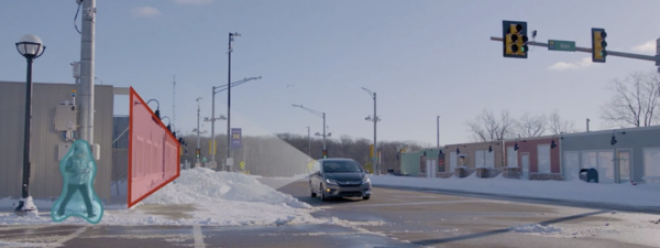Make driving safer Verizon and Honda collaborate on 5G and edge computing

According to foreign media reports, recently, Honda and telecom operator Verizon are studying how 5G and mobile edge computing may improve the safety of today's connected cars and future self-driving cars.
The two companies are piloting different safety solutions at the University of Michigan’s Mcity (a test bed for connected and autonomous vehicles). The company's goal is to study how 5G connectivity and edge computing can make communication between cars, pedestrians and infrastructure faster. As a result, faster communication allows cars to avoid collisions and dangers and find safer routes.
This partnership is based on the in-vehicle safety artificial intelligence technology that Honda began to develop in 2017. This technology uses in-vehicle communication technology, namely C-V2X communication technology. As the name suggests, it allows vehicles to communicate with other road users.
Ehsan Moradi Pari, head of the research team of Honda’s Advanced Technology Research Department, said in an interview with the media: “Traditionally, after using V2X, cars will communicate with each other. Cars provide each other with their own information, such as position, speed and other sensors. Information, and then the car conducts a threat assessment. What 5G and mobile edge computing technologies provide is that they both provide their own information to the network, and the network will tell me whether there is a possibility of an accident."
Information generated by connected cars, people, and infrastructure is sent to the 5G network instead of relying on poorly performing car computers to complete the work. Then, the calculation is done in real time at the edge of the network.
The advantage of this is that a car that relies on sensors and software may be able to know what the driver is about to hit and apply the brakes, but mobile edge computing can almost predict the future by detecting and communicating what happens on further roads.
One of the safety scenarios tested by Verizon and Honda was running a red light. Using data provided by smart cameras, mobile edge computing and V2X software, they can detect vehicles running through red lights and send visual warning messages to other vehicles approaching the intersection.
There is also some resistance to the combination of 5G and mobile edge computing. This level of interconnection will only work if there are sensors on every highway and every intersection. Many 5G-capable vehicles and devices will be able to communicate with each other, but only when smart cameras record pedestrians or infrastructure and share information with the network can they communicate with pedestrians or infrastructure.
This will require huge infrastructure investment, as well as public acceptance and cooperation with cities and localities to install all the necessary sensors.
【Editor in charge: Zhao Ningning TEL: (010) 68476606】